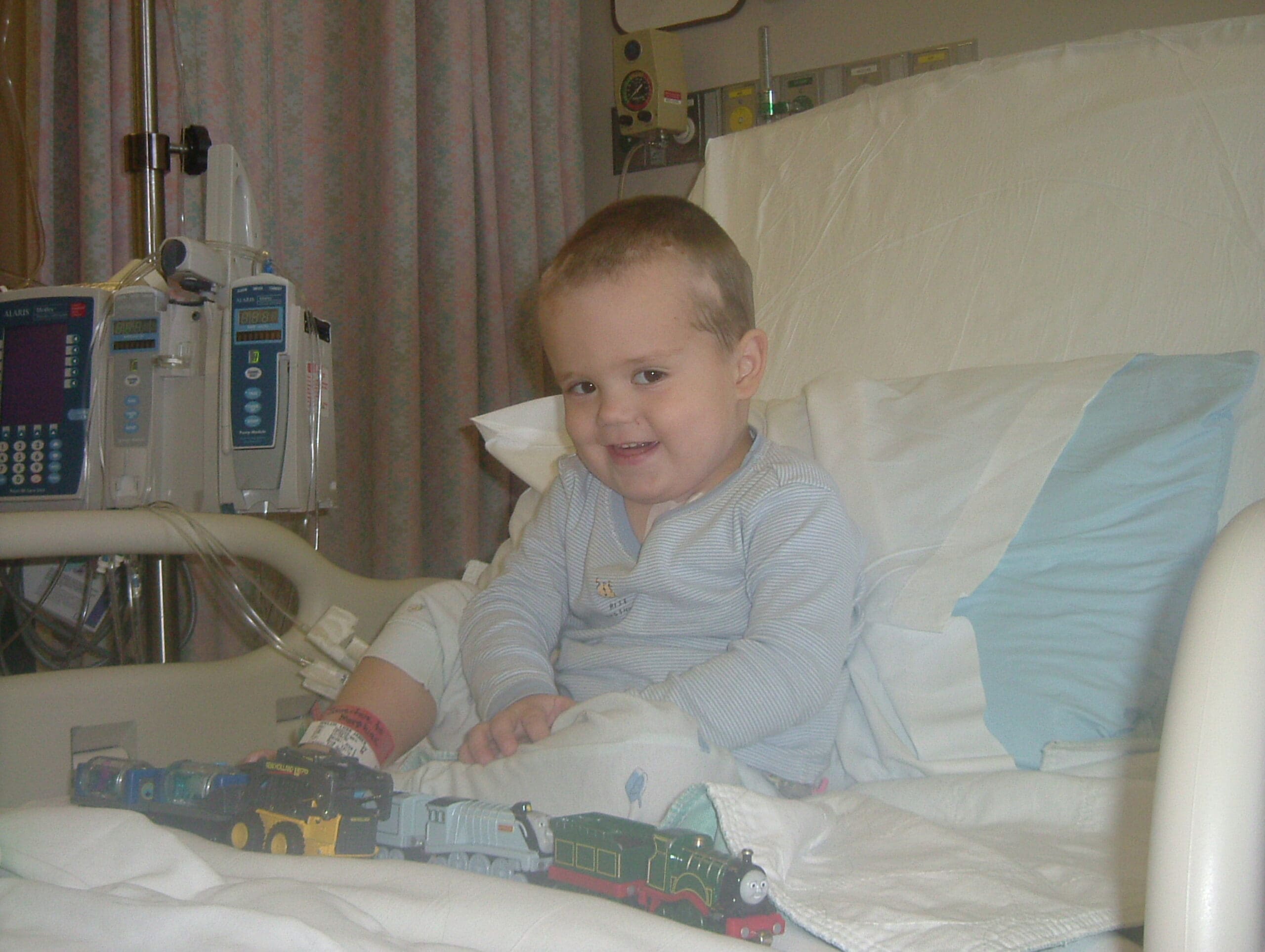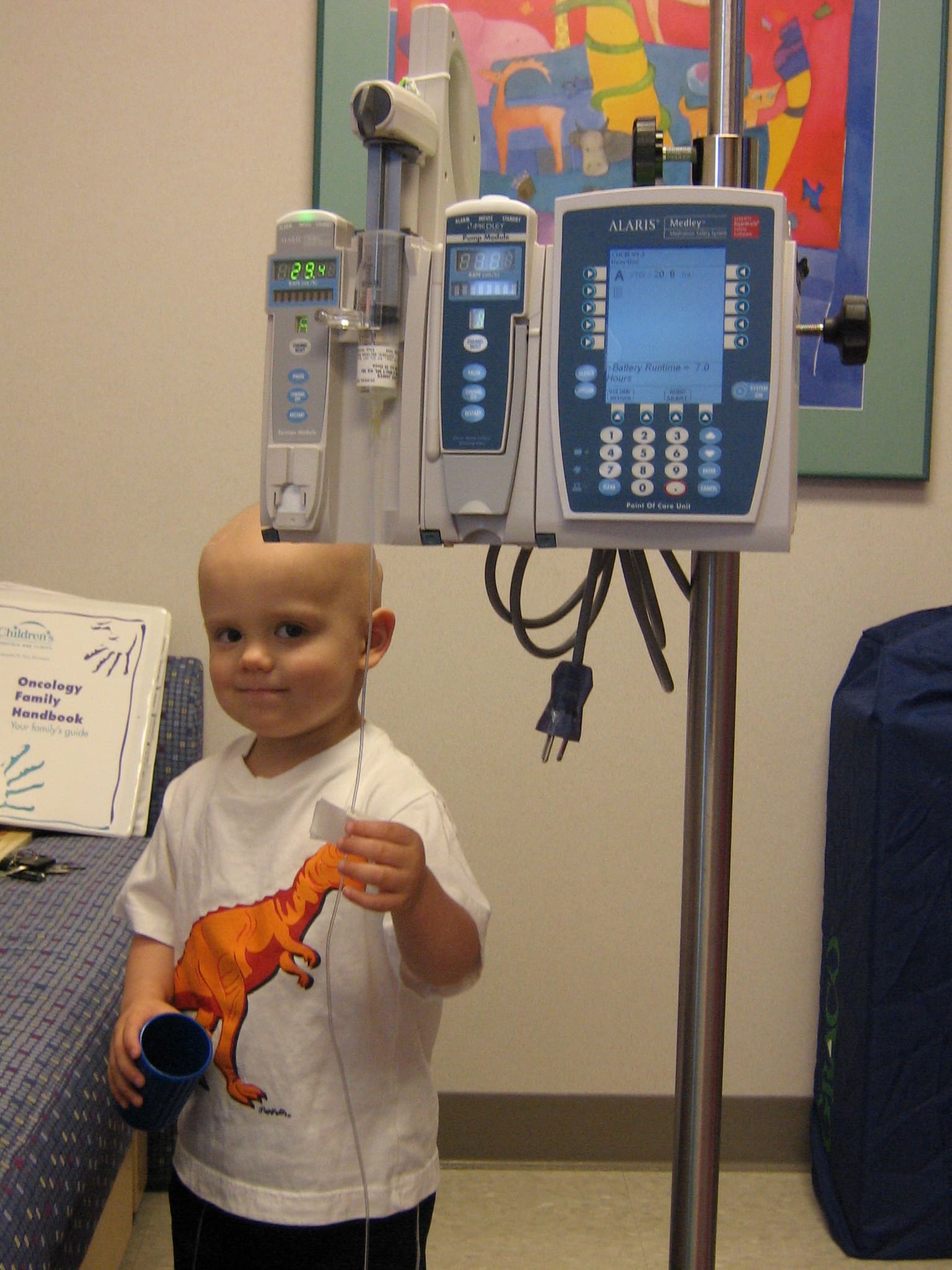Luke doesn’t remember much about the first time he was diagnosed with cancer, but his parents certainly do. “He was a really happy two-and-a-half-year-old,” remembers Treacy, Luke’s mom. “But we started noticing he was tripping and falling over. At first, we thought maybe he was trying too hard to keep up with his older brother, Jack.”
But when Luke’s condition worsened, his parents brought him to their pediatrician. After watching him walk, the pediatrician sent the family to Children’s Minnesota for an MRI. Only hours later, the care team informed them that the scan revealed a golf ball–sized tumor on Luke’s cerebellum, the part of the brain that controls balance, coordination and movement. He had surgery to remove the tumor, and a few days later, he was diagnosed with medulloblastoma, a type of cancer.
Because Luke was so young, Anne Bendel, MD, his neuro-oncologist, put him on a clinical trial to minimize the amount of radiation that his still-developing brain received during treatment. Luke went through daily radiation for six weeks along with almost two years of chemotherapy treatments. When he was finishing chemotherapy, the family got the news they’d been hoping for — he was cancer-free.
“It was such a relief,” says Jim, Luke’s dad. “As parents, this was a trying time. We had Luke going through treatment while his brother, Jack, was starting kindergarten. But we were surrounded by great family, friends and the team at Children’s Minnesota.”
For several years, Luke thrived as a typical boy. He played with his big brother and enjoyed the outdoors with family. But when he was 15, he started getting intense headaches. Then one day, he couldn’t get up.
“I didn’t think much about the headaches until one day when I woke up and just couldn’t get up because my head hurt so bad,” recalls Luke. “I think I sat up and my headache was so bad I started crying.”
An MRI revealed that Luke had developed another brain tumor and that it was cancerous. This time around, he was old enough to understand what that meant. Thankfully, as Bendel explained to the family, research made it possible to personalize his chemotherapy treatment to target the specific tumor.
“The purpose of our research program is to try to improve the outcomes for patients in our cancer and blood disorders program to learn more and to find new treatments,” describes Bendel. “When I started, we’d cure 60% to 65% of patients. Now we cure around 75% to 80% of childhood tumors. I attribute that to clinical research.”
After having surgery to remove the tumor, Luke went through targeted chemotherapy. His last treatment was in August 2019, and he’s been cancer-free ever since. “We thank the cancer and blood disorders team at Children’s Minnesota for everything they’ve done for Luke,” says Treacy.
Now 20, Luke is currently a sophomore at Bemidji State University. His goal is to become a pediatric oncology nurse at Children’s Minnesota to help care for other kids and teens battling cancer. “Children’s Minnesota is great,” he says. “They’re experts and make a challenging diagnosis and treatment as comfortable as possible.”
The cancer and blood disorders program is the focus of this year’s Children’s Minnesota Star Gala, the premier black-tie fundraiser for Children’s Minnesota. For 30 years, the philanthropic community in the Twin Cities has come together to raise millions of dollars for the nonprofit, which relies on generous donors to make possible the life-changing programs at Children’s Minnesota.





